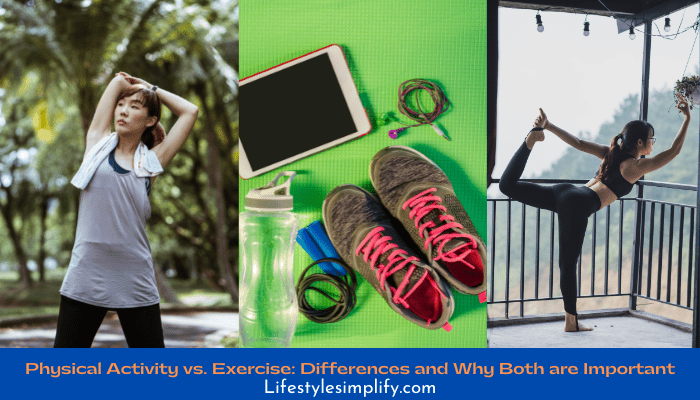Is There Really a Difference?
When most people hear the terms “physical activity” and “exercise” they assume that they’re the same thing. They are very similar, but exercise is actually a subcategory of physical activity.
Physical activity is defined as any movement of the body that requires energy. Exercise, on the other hand, is a more intentional and structured form of physical activity that is often repetitive in nature. Both exercise and physical activity are necessary for a healthy lifestyle.
What Counts as Physical Activity?
Physical activity may or may not feel like exercise, depending on what you’re doing and who you are. Again, physical activity is any movement of the body, yet it’s not structured or repetitive. Examples of physical activity could include:
- Cleaning your home
- Occasional activities such as dancing, rocking climbing, and sports
- Purposefully walking longer distances
- Taking the stairs instead of the elevator
- Yard work, including gardening
Physical activity can also become exercise if your activity becomes intentionally structured and repetitive. For example, taking dance classes and participating in sports more than once can be considered exercise. Other activities that can become exercise include:
- Biking/cycling
- Jogging/Running
- Swimming
- Walking
Because so many things are considered to be physical activity, you’d think that the majority of people get enough physical activity every day. Unfortunately, this isn’t true since a quarter of all Americans live a sedentary lifestyle, while more than half still don’t get the recommended amount of physical activity or exercise every day.
What Counts as Exercise?
As mentioned above, exercise is structured and repetitive. It’s thoughtful, intentional, and continuous physical activity with the goal of improving one’s health. Those who have specific workout routines, including going to the gym or fitness classes are engaging in exercise. Examples of exercise include:
- Aerobic exercises (cardiovascular exercises: running, jumping, etc.)
- Balance exercises (pilates and yoga)
- Resistance exercises (lifting weights and using a resistance band)
It should be noted that you should talk to your doctor before starting any exercise program, especially if you’ve never exercised before or if it’s been a while since you last exercised. Exercise can actually do more harm than good if a person starts off too extreme, or engages in the wrong type of exercise.
How Much Physical Activity/Exercise is Enough?
It’s recommended that adults get 150 minutes of physical activity per week, which translates into physical activity for 30 minutes a day, five days a week— but that can be divided up differently. The more you exercise, the better— depending on what your doctor determines to be best for you.
Why is Physical Activity/Exercise So Important?
Both physical activity and exercise can help prevent a variety of illnesses, diseases, and conditions. For those who aren’t physically active at all, it’s recommended to start with moderate physical activity before jumping right into an exercise routine. Even physical activity can begin to reduce the risk of developing the following conditions.
Cancer
Those who engage in physical activity regularly are less likely to develop the following types of cancer:
- Bladder
- Breast
- Colon
- Esophageal
- Kidney
- Lung
- Stomach
Keep in mind that physical activity lowers your risk, not necessarily prevents cancer. It’s important to get regular cancer screenings, especially if you have a history of cancer in your family.
Diabetes
People that carry more weight around their midsection are more likely to develop type 2 diabetes. Because regular physical activity encourages weight loss, you automatically decrease your chances of developing type 2 diabetes when you constantly engage in physical activity.
Heart Disease
Heart disease and stroke are two of the leading causes of death in the United States. Many things contribute to these conditions, but the biggest contributors are high blood pressure and high cholesterol. Regular physical activity can help lower both blood pressure and cholesterol, therefore reducing your risk of heart disease and stroke.
Osteoporosis
As we age, our bones and joints get weaker, and living a sedentary lifestyle can accelerate this process. Weaker bones can make it more difficult to keep your balance, and you’re more likely to fall and fracture or break a bone— even if the fall wasn’t your fault. Physical activity (especially those that require you to use your muscles) can help strengthen your joints and bones.
Overall, both physical activity and intentional exercise are extremely important to health. Combined with a healthy diet, you’ll better your chances of decreasing your risk for certain conditions. Also, remember to consult with your doctor before starting any exercise program.
![]()



